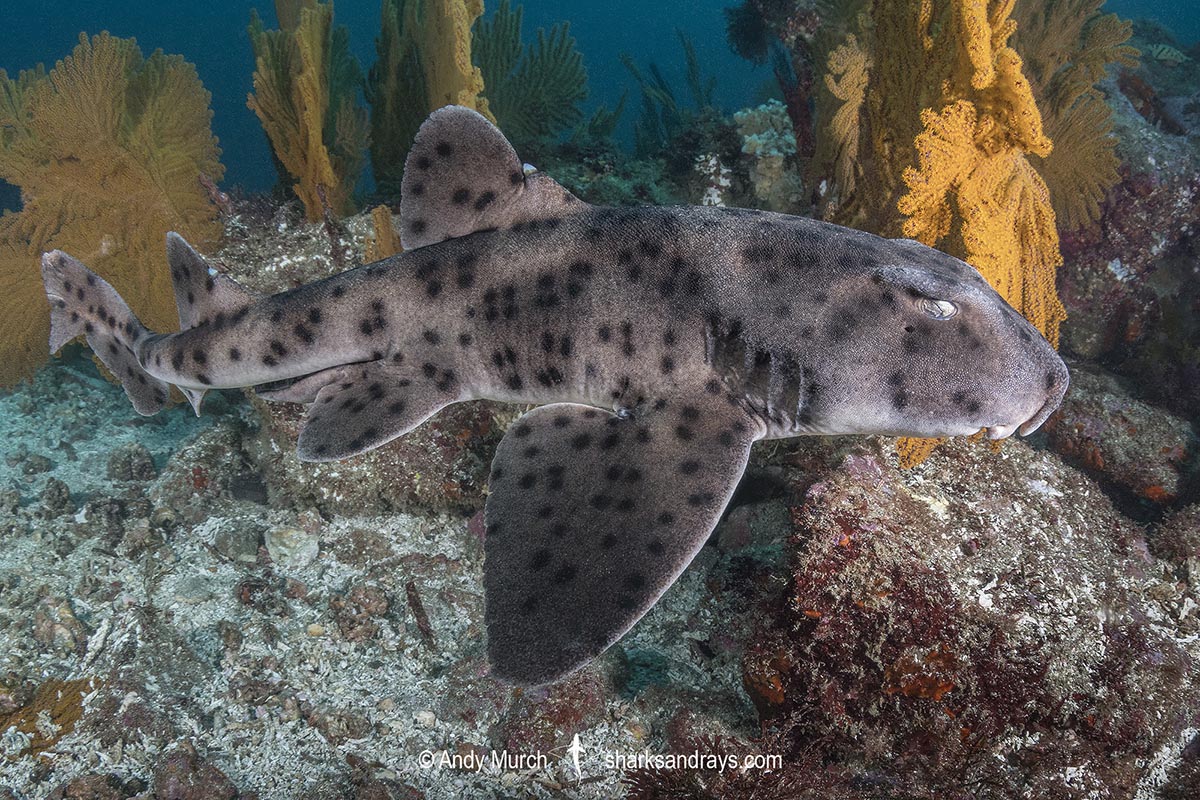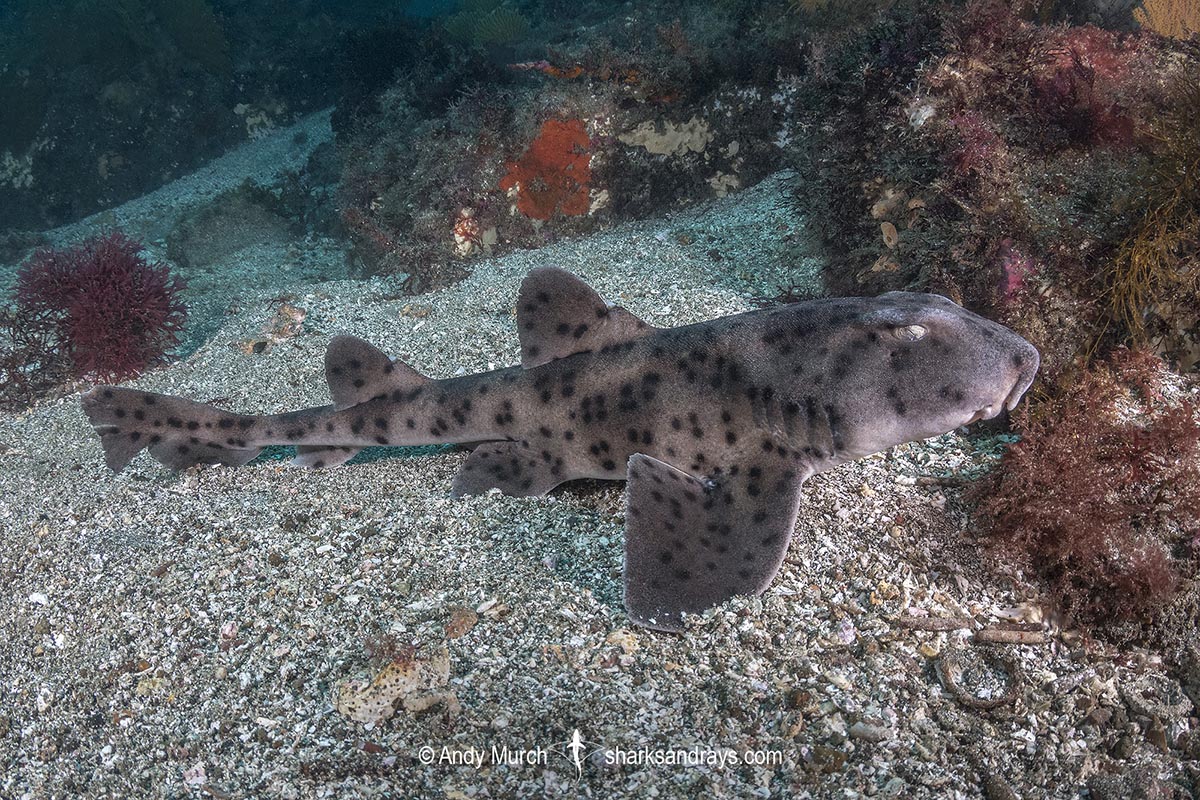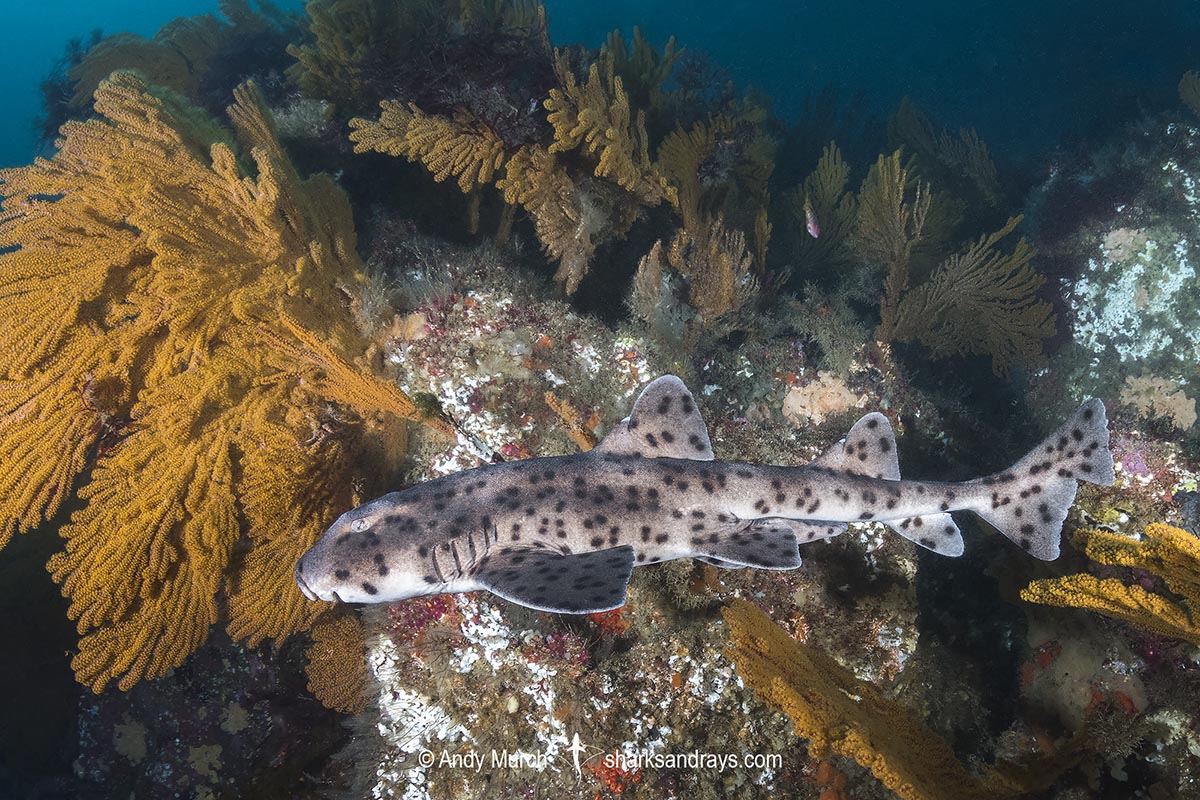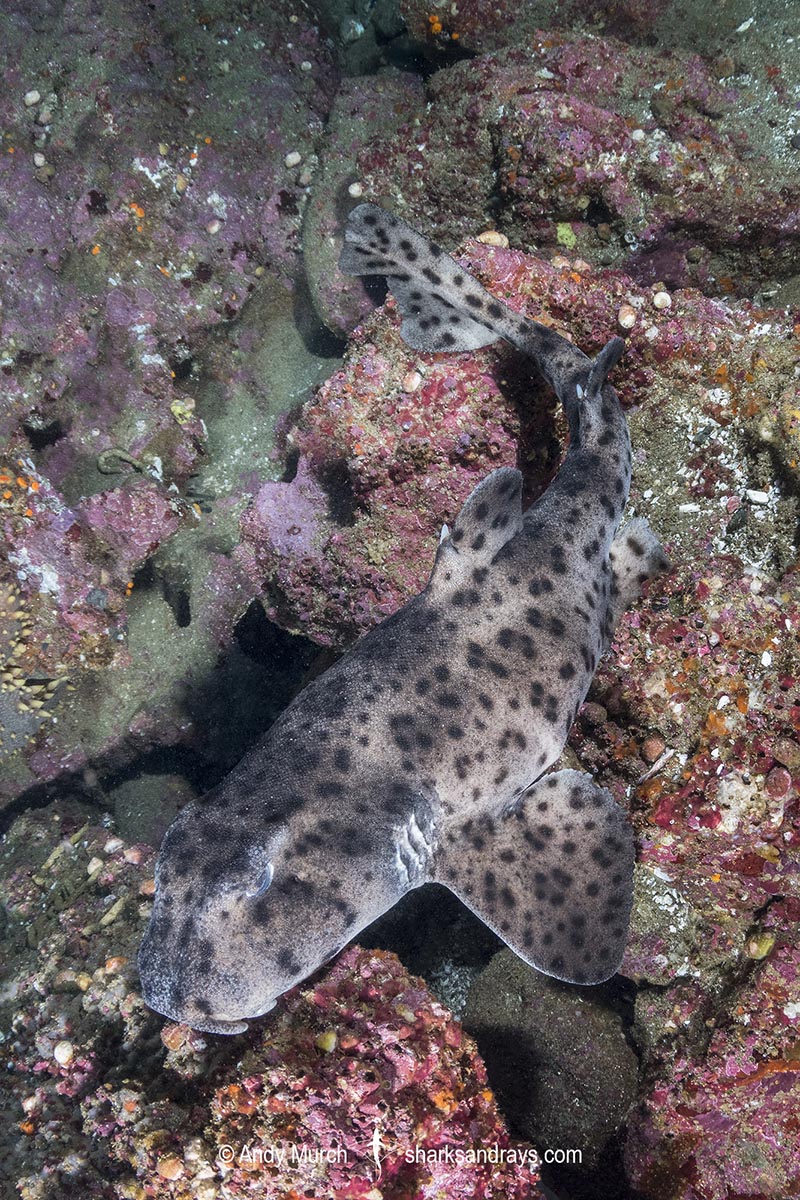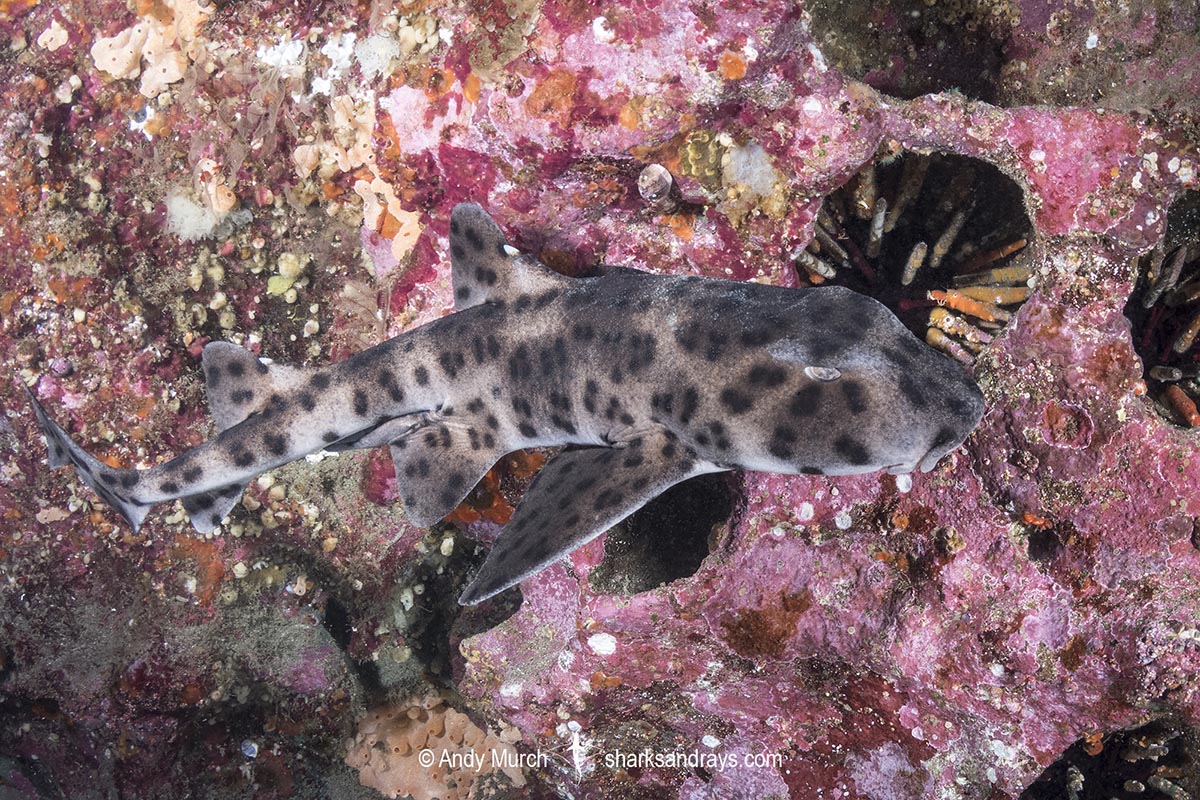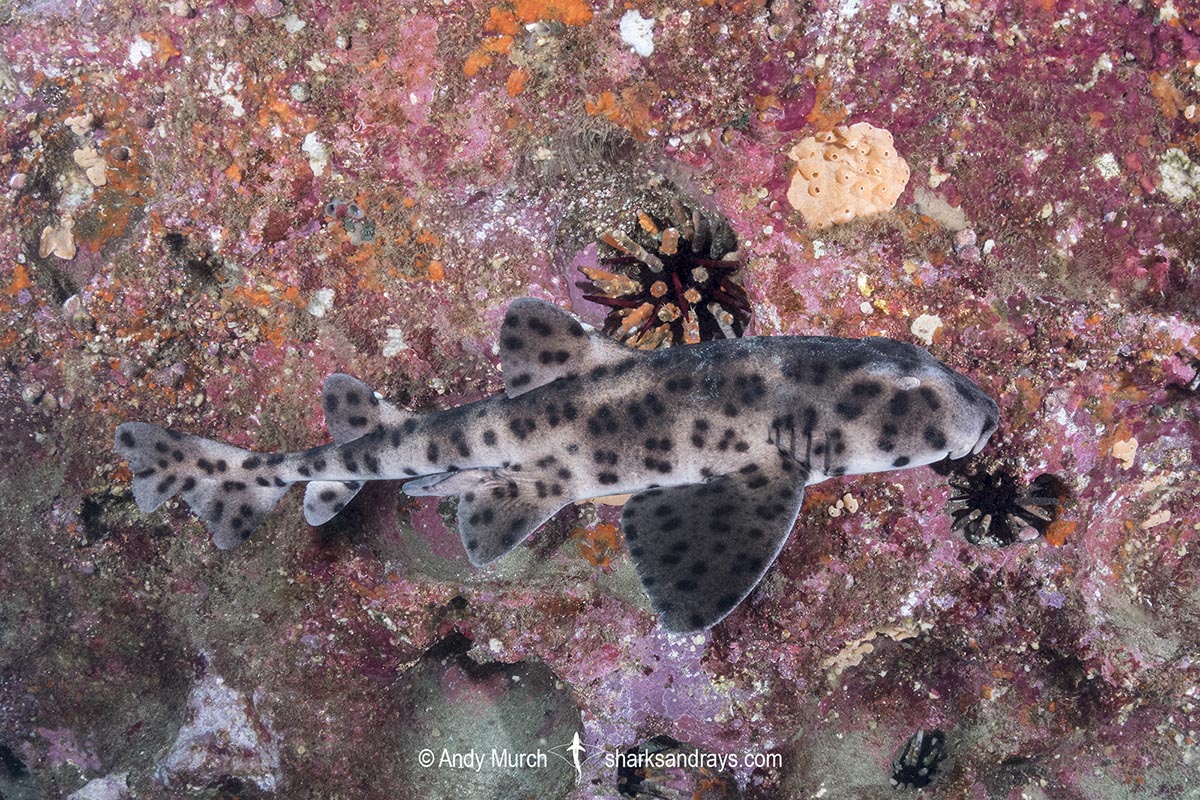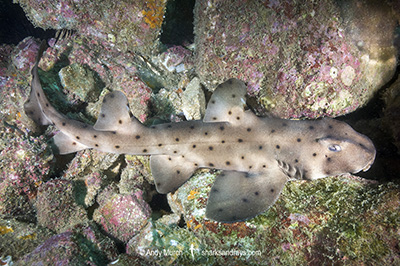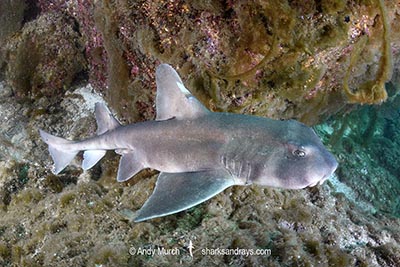Common names
Galapagos Bullhead Shark, Galapagos Horn Shark.
Binomial
Heterodontus quoyi
Synonyms
Cestracion pantherinus, Cestracion quoyi Fréminville, Gyropleurodus peruanus.
Identification
Stout body. Large square head with prominent ridges above eyes. Two large dorsal fins with rounded apexes, each with a spine at its origin. First dorsal fin origin level with pectoral fin free rear tip. Second dorsal fin origin level considerably posterior to pelvic fin free rear tip. Pectoral fins much larger than first dorsal. Pelvic fins about the same size as dorsal fins. High, short anal fin. Well developed caudal fin with deep subterminal notch.
Dorsal coloration greyish-brown, with a bold pattern of black spots that are about the same size as the eye. Spots may be scattered, in pairs, or in clusters that look vaguely like leopard spots.
Size
Maximum length 105cm. Size at birth approx. 17cm.

Conservation Status
LEAST CONCERN
The Galapagos bullhead shark is protected within the Galapagos Marine Reserve where it is not commonly captured. When it is caught it is discarded and has a high post-release survivorship. The population in Peru (which may be a separate species) is more vulnerable but little data is available.
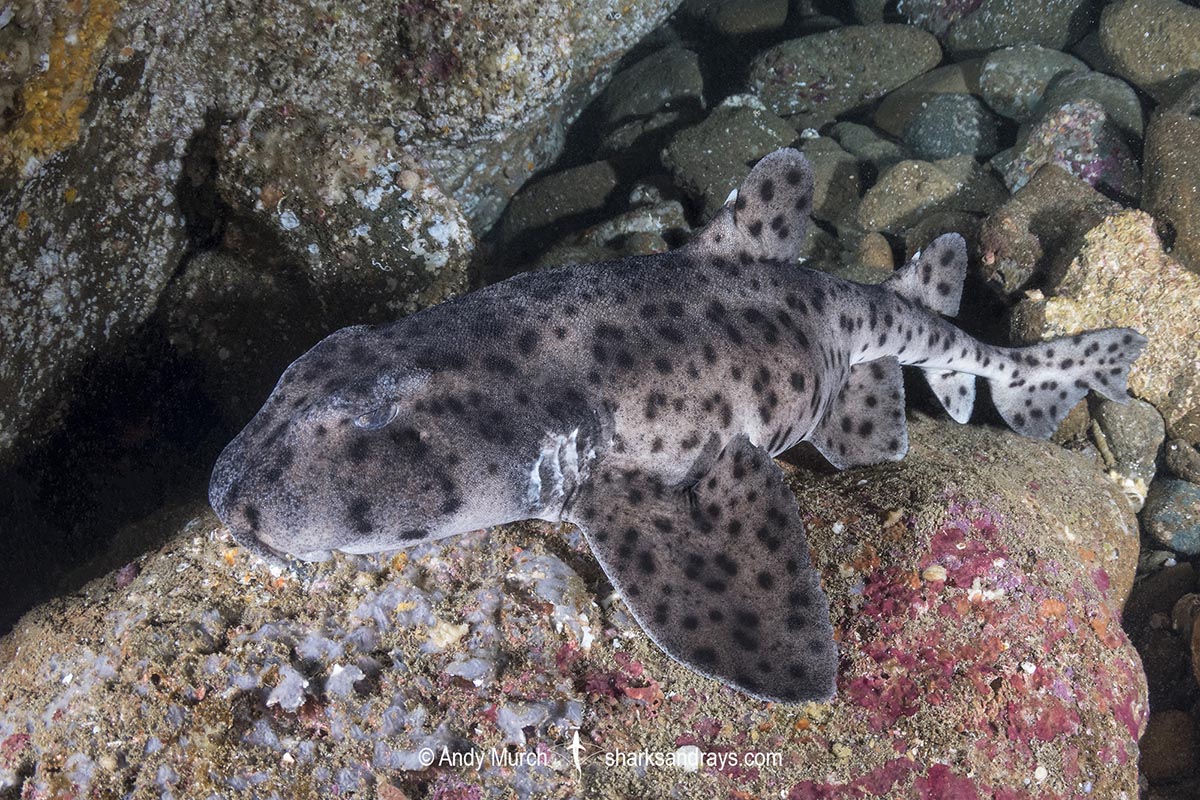
Habitat
Cold-temperate seas. Present on coral reefs and rocky outcrops. From 3-30m.
Distribution
The Galapagos horn shark is found in the southern part of the Galapagos Archipelago and along the coast of Peru. It is possible that the Peruvian form is a separate species.
Reproduction
Oviparous. Reproductive details are poorly known.
Diet
Feeds on crustaceans and probably other invertebrates.
Behavior
Galapagos bullhead sharks are nocturnal hunters that often rest on ledges of vertical structures during the day.
Reaction to divers
Easy to approach, remaining completely motionless unless molested, at which point Galapagos horn sharks usually slowly swim away to a quieter resting spot.
Diving logistics
Although the Galapagos bullhead shark has a very limited accessible range, it can be reliably encountered at Punta Vicente Roca on the northwest tip of Isabella Island in the southern Galapagos Archipelago. In early December, I found 5 or 6 Galapagos bullhead sharks on a single dive at that exact spot. Another diver found a Peruvian torpedo ray; another ‘hard to find’ species that is known to frequent the colder islands in the Galapagos.
Punta Vicente Roca is close to Fernandina Island; the best area to snorkel with marine iguanas and undoubtedly another good place to look for bullhead sharks. The area between Punta Vicente Roca and Fernandina is known as the Bolivar Channel.
Galapagos bullhead sharks seem to favour areas affected by deep water upwellings. This may be because they prefer cooler water, or it could be because the nutrient rich upwellings keep the reef’s invertebrates well fed, so the sharks have a healthy food supply.
Apparently, the west side of Floreana Island (where there is another upwelling) is another good spot for this species.
There is another population of Galapagos bullhead sharks off the coast of Peru but there is not much diving infrastructure along that coastline. When I dove in Máncora in the far north of Peru, none of the locals mentioned seeing this species.
What’s new
View our full list of updates
Similar species
Horn Shark Distinguished by its paler brown base colour with small dark spots that are not arranged in clusters.
Mexican Horn Shark Distinguished by lighter grey/brown base colour sometimes with sparsely scattered dark spots that are generally larger.

